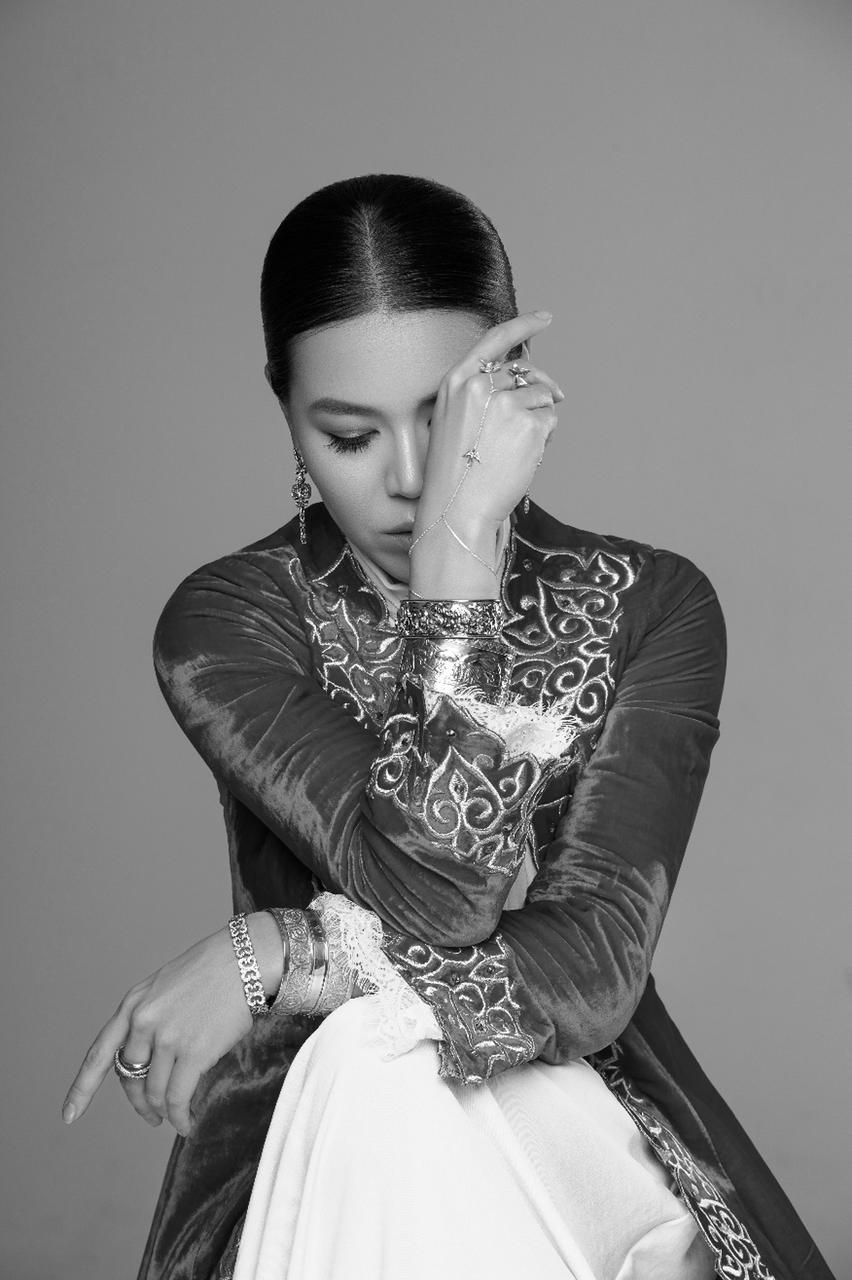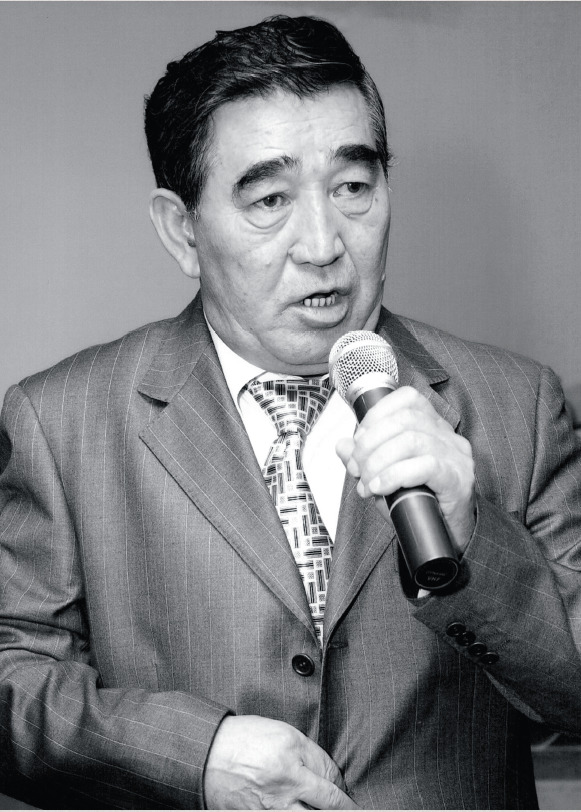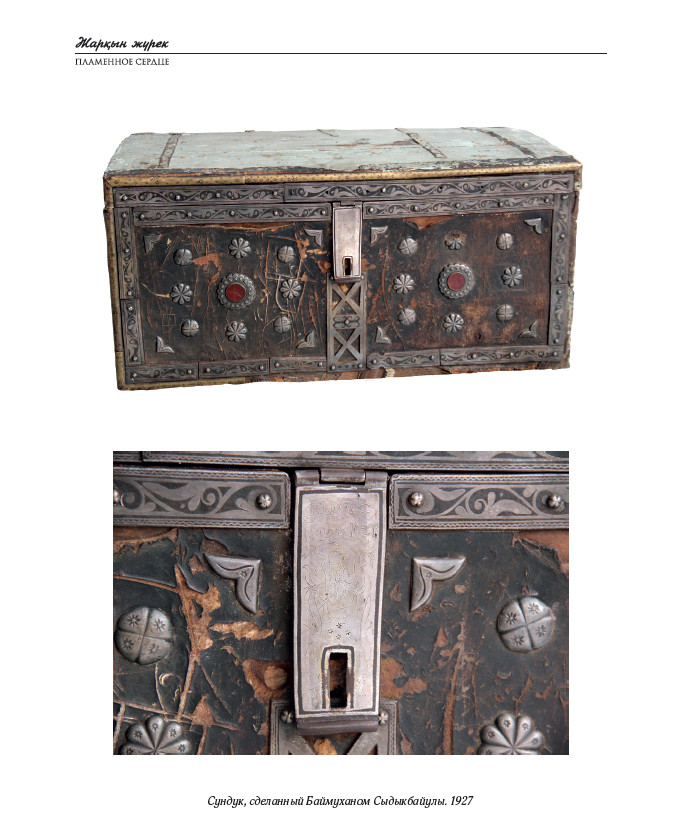
The magic of Kazakh national jewelry part 1

Having touched on the original Kazakh clothes for women in the last issue and promised to talk about ancient jewelry next time, I will honestly say: at first I wanted to tackle another topic and postpone national jewelry "for later". But later I changed my mind, because I love November very much, and not only because at the end of autumn we have a lot of birthdays in our family: me, my husband and my grandfather - all were born in this first pre-winter month. Now I think that I am simply obliged to tell you about the history of Kazakh jewelry, why - you will find out later ...

Grandfather played a very important role in my life: for me he was both a grandfather and father, a friend, and Teacher with a capital letter. Most of what I write today is the merit of my grandfather. In the early spring of this year, my book was published, timed to coincide with the first anniversary of the death of my beloved grandfather. And on November 7th, on the eve of grandfather's birthday, I decided that I would devote my sixth article to him. As I have already noted, you will learn about the connection between grandfather and jewelry art a little later. Meanwhile, I want to honor his memory with an excerpt from the book "Zhargyn Zhurek":
"March. 2017 year. Spring does not come this year, nature is cold ... Just like my soul, getting cold, will never be the same. I grew up a long time ago, but only now I understood the truth ... Back in 1989, in the Alma-Ata region at the state district power station in a cold November, a girl was born. From the first minute of her life, her little baby soul was warmed by a big kind heart. It was a heart that, tearing off a piece from itself, gave it to a crumb.
This is my grandfather's heart! Of the 27 years of my life, the first 20 years I lived with my ata and apa. My first steps, first words, first achievements are the merit of my grandparents. I was born in the Ili region. In those days, ata worked as the first secretary of the Ili district party committee. I was lucky enough to spend an unforgettable childhood, where everyone cherishes me and carries me in their arms. During my infancy, according to my family, the attacker came to lunch much earlier just for my sake. Every day before the start of the working day, he accompanied me to kindergarten. In the first grade, I went to a school that my grandfather opened. After the collapse of the USSR in 1991, this is the first Kazakh school in the region.
When I was in the 3rd grade, my grandfather was appointed as akim (a mayor) in his homeland, and he went to work in the Raiymbek district. For those who are unfamiliar with this land, this is the birthplace of great mountains and lakes ... It is there that the Charyn canyon, the high-mountainous Kolsai lake and the mysterious Kaindy lake are located. I remember this day as if everything happened yesterday: grandmother and the driver got into the car, and the driver took them away - without me! When the car went round the corner, I could not hold back my tears. I cried for a whole week. They tried to persuade me not to cry ... to stay ... because here are all my friends and girlfriends, brothers and sisters, after all, my dad and mom.
They never succeeded - they sent me after my grandfather and grandmother. And again I found my World ... The World in which I was happy! The world where my grandfather and grandmother were! The little girl's reign continued. For my sake, Saturday classes were canceled in the entire area. After all, grandfather and grandmother left for Almaty every weekend, respectively, they could not leave me alone, just as I could not miss lessons. It's time to finish school - already in Almaty - I became one of those who had to take the Unified National Test. The results of the UNT in the Republic of Kazakhstan are recognized by colleges and universities as the results of admission exams. I remember those days - I studied in two classes at once.
Before lunch - at 10, and in the afternoon - at 11 and in the evening - a school to prepare for testing. And so for a whole year ... During this time, grandfather and I studied all the collections of tests. He, not lazy, spent evenings with me, learning 500 questions on the history of Kazakhstan. And in the middle of the summer, the newspaper "Egemen Kazakhstan" was published with a list of 1000 and more applicants - grant applicants, among whom was my surname. I will never forget his tears ... Tears of happiness ... He was more happy than I myself!
The last time my grandfather was again so happy for me was when I defended my PhD on December 10th , 2016. I myself did not see his tears of joy, but I was told that he could not contain them after hearing this news. After all, he always dreamed that I would become a scientist. It would be better that day I went to you, grandfather, to see your tears of happiness - for the last time ... On March 3, 2017, the largest and brightest heart stopped beating.
My beloved grandfather, my named father, my ideal man on this earth is gone. This time I won't be able to bring you back with tears ... This time you left me forever ... Now my heart had to tear off a piece and give it to you, grandfather. Eternal memory to you, Baimukhanov Bakyt Baimukhanovich! May Allah be merciful to you just as you were merciful to me. "

My grandfather, Bakyt Baimukhanovich, loved mountains, and in the last years of his life he really wanted to visit tops of the mountains and breathe fresh air. All this is because he was born and raised in a mountainous area. His life began on November 8, 1946, in the village of Saty, Kegen district, Alma-Ata region. His father, Sydykbaev Baimukhan, was the manager of the village of Saty. He was distinguished by his pleasant appearance and amazing eloquence, he managed to do everything well thanks to his skill. At one time, father Sydykbai gave his two sons, Nursadyk and Baymukhan, a playful horse. Since he was a noble jeweler, he made horse harness and saddles with his own hands. Cast them from brass and trimmed with silver. One of these precious horse harnesses is now a museum piece of the National Museum of Astana. Rare skills and talent were passed down from generation to generation - from father to son. "
Remembering my grandfather and great-grandfather, I understood why I consider it my duty to raise the topic of jewelry art in Kazakhstan and tell about the uniqueness of national jewelry created by our craftsmen. Once upon a time, I read the words of a Turkmen jeweler, said about his profession, which I still remember, unfortunately, in contrast to the name of the master. He argued that the work of his life will never fade away if there is at least one woman in the world ... These words can become the epigraph and leitmotif of our topic! I agree with him one hundred percent and am sure that not a single reader will object. Probably, now many people remembered the words from an unpretentious song about "the best friends of girls." Yes, but Kazakh young ladies prefer silver items to diamonds, made by real masters - artists and poets from jewelry business.
Indeed, the profession of a jeweler is an ancient and at the same time young and eternal art. Like any professionals, Kazakh masters draw inspiration from getting acquainted with the works and continuing the national style and traditions of their predecessors. Today, no one in Kazakhstan, however, as well as in the whole of Central Asia, needs to explain and translate who a zerger is - everyone knows that he is a master of jewelry. Not every artisan who worked with gold and other precious metals and stones (from the Persian word "zer-zar" - "gold" - our "zerger" was formed) could be called a zerger - a jeweler. This profession is dynastic: all the secrets and secrets of craftsmanship were passed exclusively by inheritance as the most precious family property.

The modern jewelry art of domestic craftsmen has centuries-old traditions, emphasizing the aesthetic and cultural traditions of the people, and magnificent collections of monuments of Eastern toreutics can be viewed in the national and ethnographic museums of the country. The territory of today's Kazakhstan has always been rich in minerals, which our nomadic ancestors mined in a handicraft way, and the products were originally decorative and applied in nature. Kazakh zergers gave life to a wide range of products, among which were household utensils, toiletries, cutlery; details for decorating the wooden frame of the yurt, musical instruments, weapons, horse harness, men's belts; and, of course, women's jewelry.
At the oriental bazaars located on the Great Silk Road, artisans acquired gold, silver, tin, copper, brass, metal - and the creative filigree process of creating beauty frozen in stone and metal began! Zerger nomads, masters of oriental toreutics (the art of stamping on metal, including gold and silver) mainly made their products from sheet metal, using soldering, filigree, obron (three-dimensional) engraving, notching and embossing in their work. In addition, using basman boards, they received relief prints on the product in the form of rhombuses, triangles or other shapes.
This technique was called basma (accent on the last syllable!). Kazakh jewelers very skillfully used grain - they melted small balls of this metal on silver or gold, thereby emphasizing the forms and creating ornaments. This unique style and handwriting of Asian jewelers was highly appreciated in Europe, where the products of Kazakh zergers were delivered along the well-trodden Silk Road by numerous caravans and, starting a new life in countries with a different culture, were in great demand there.
Many Europeans came to the steppe inhabitants to learn their skills - this is how foreign borrowings took place: the work of nomadic and sedentary peoples mutually enriched jewelry in form, technique, materials used, decor details and purpose - in a word, it contributed to the development of elegant and painstaking art.
So, after reading an excerpt from my book, you realized that my great-grandfather was a real zerger (though, it's a pity that his sons chose a different path, but still, helping their father, they knew a lot about jewelry). That is why I believe that, being the great-granddaughter of the master's jewelry, I have the right to write about Kazakh national jewelry. You can talk a lot about the decorative and applied direction of domestic zergers, in which my great-grandfather also worked, but I want to tell you more about women's jewelry.
In the old days, thanks to the functional purpose of the jewelry worn by a woman, it was possible to find out her origin, preferences, property differences, class and marital status, even age, as well as the region of residence and the historical stage in the development of national culture. Jewelry accompanied Kazakh women almost throughout their lives, and most of all they liked silverware, which in the Steppe was considered a sacred metal, guaranteed the well-being of the family and allegedly even deprived of the power of poisons (that is why women cooked food with silver rings on their hands, and when the babies were bathed, a product made of silver was dipped into the water).
By the way, this noble metal was mentioned in the Qur'an: when the Almighty spoke about a great variety of benefits and beauties that bring joy and pleasure to a person, He also mentioned vessels, cups and necklaces made of silver. “... And they will go around them with vessels of silver and goblets of crystal. And with cups of shining silver that bear marks of measure. And they will be allowed to drink from a bowl with the addition of ginger. " “… Wherever you look, everywhere you will see grace and great wealth. They are wearing green robes of fine silk and embroidered brocade. They are adorned with silver necklaces. And the Lord will give them the purest drink to drink. Truly, this is a reward for you, your diligence is accepted worthy of gratitude! " (Surah "Al Insan", 76: 20-22)
The craftsmen also had various jewelry made of gold, but they were in less demand due to the high price. Despite the fact that silver jewelry was also worth a lot, nevertheless many steppe inhabitants had such wealth. Possessing a precious thing, Kazakh women believed in the power of nature, which would help them to strengthen their health, protect them from evil spirits and make their dream of happiness come true, and then the decoration became a family heirloom and was inherited. That is, initially, national jewelry had magical, religious, protective and practical functions, and only after many, many decades, the aesthetics and beauty of jewelry became more significant for women.
Restraint of color, laconic forms with some massiveness, geometric shapes and steppe ornamentalism - these are the main differences between the works of Kazakh jewelers, the owners of which felt themselves under the protection of sacred metal and oligonous stones, endowed with no less magical power.
Even the clothes, hats and shoes of Kazakh women were decorated with embroidery, patches and appliqués. The steppe women wore a variety of flat and voluminous fasteners as decorations for national clothes: ilgek, kaptyrma and kapsyrma, connecting the sides of the camisole with each other, which had beautiful expressive forms and decor. In addition to them, the zergers produced ornamental patterned plaques for decorating clothes - tana, buttons - darkness and triangular amulets - tұmar, and hair combs - taraқ did not stand aside. And also master-jewelers worked on the obligatory elements of national clothing for tightening the waist - men's and women's belts, mainly on a velvet base, decorated with ornamental embroidery and silver plaques, which were called beldik.
1. Kurbanalieva M. K. Zharkyn zhurek (Flaming heart), Almaty, 2018, pp. 17, 18 2. Quran, Sura "Al Insan", 76: 13-19 https://harunyahya.ru/ 3. Jewelry art http://old.unesco.kz/heritagenet/kz/content/mat_culture/crafts/yuvelir.htm 4. Mikhail Yudin. Jewelry art of Kazakhstan, http://www.arba.ru/article/711
Author: Madina Kurbanalieva, @madina_kurbanali
Photo: author's personal archive